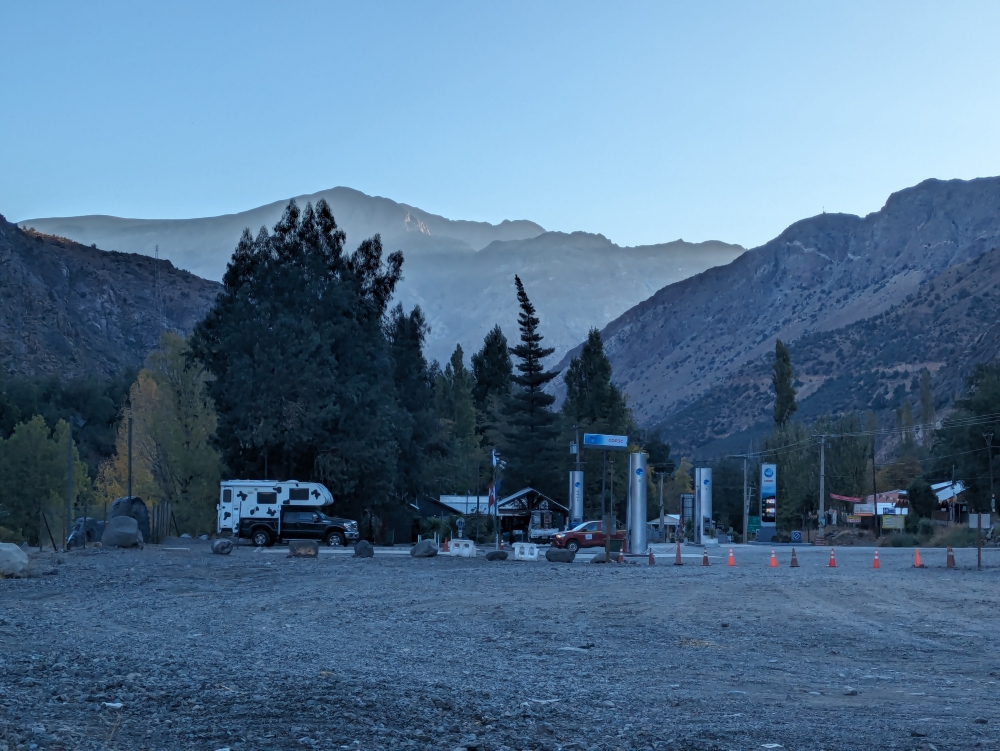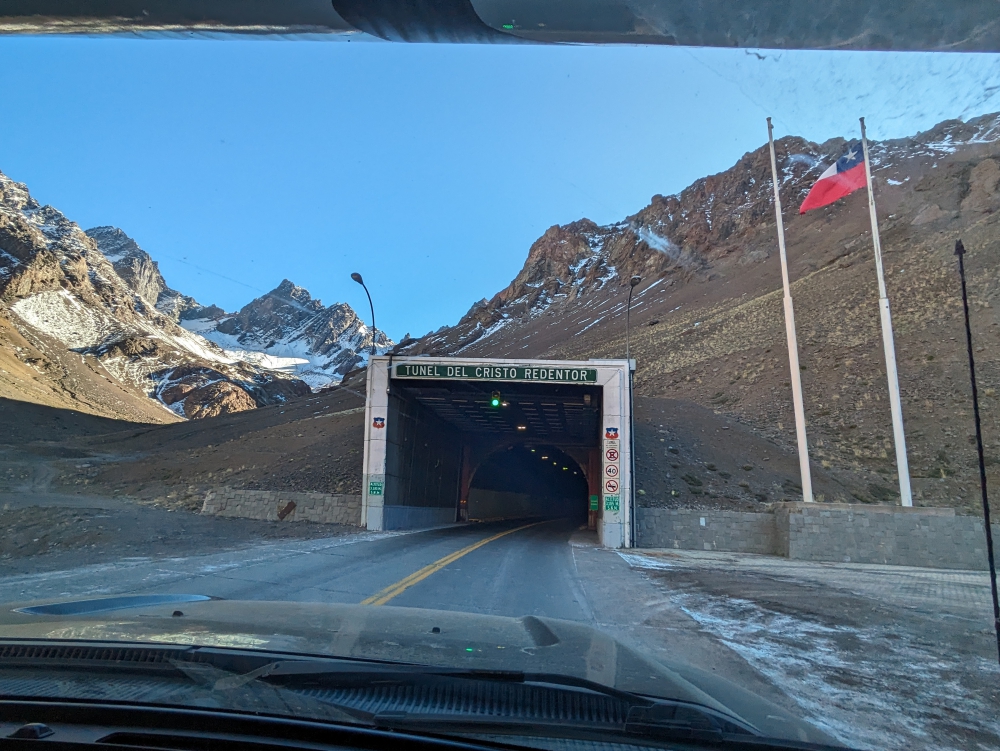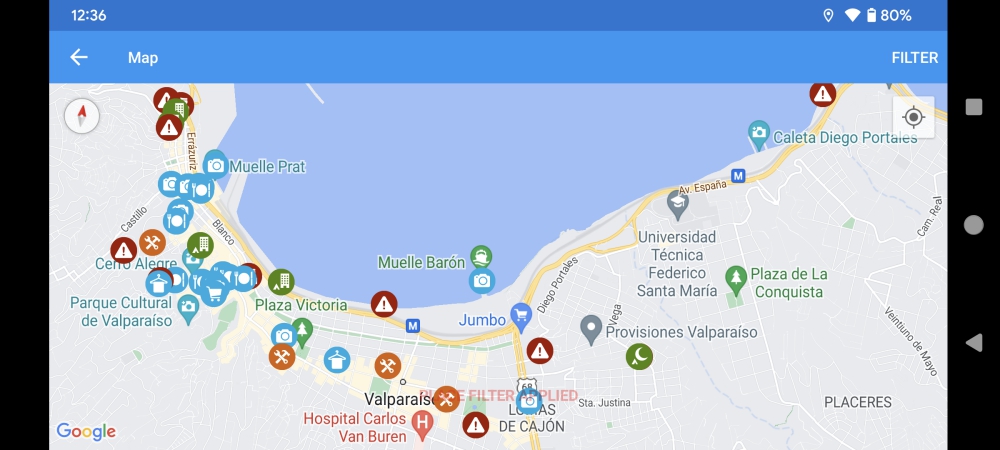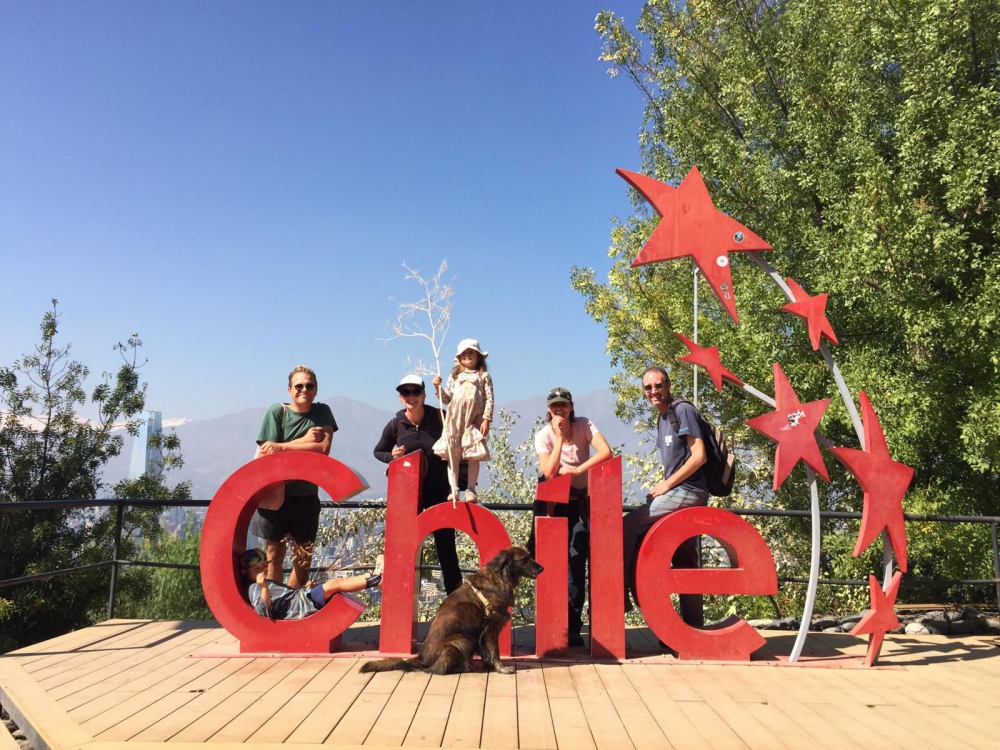
Every month, I post a report of our expenses to show that it is possible to live a comfortable, exciting, and adventurous life without breaking the bank. The less money you spend, the less you need to make. 🙂
This report includes ALL of our expenses, in US$, for two adults and one 60-pound dog (we adopted Maya on June 4th, 2019). Under groceries we incorporate food, produce, and non-alcoholic drinks predominantly bought in supermarkets. Toiletries belong in that category as well. Dining out means eating at a restaurant/event or purchasing take-out food. The health category covers non-prescription medicines and vitamins/supplements; medical contains prescription drugs and doctor’s visits. Because of our income level, Mark and I are eligible for free health care within the state of Massachusetts. For check-ups and extensive care, we return to the US East Coast. Other health issues are resolved locally and out of pocket where needed and possible.
In May 2024, Mark, Maya, and I (Liesbet) traveled around Central Argentina in our truck camper Thirsty Bella. Despite driving across the continent from west to east, we had a decent expense month, thanks to being careful with our budget, shopping for cheaper produce, donations we’d saved up, and emptying our cupboards and fridge.
(As always, hover over or click on photos in galleries to read their captions.)

Dinner @ home – squash soup, veggie burgers, potato salad, and bread from our favorite bakery in Mendoza

A wonderful and simple dinner of pasta, tomatoes, and arugula with bread

Vegetarian spaghetti – with a little bit of pancetta – dinner at home

Veggie burgers with eggplant and pasta

Another homecooked meal – rice and chicken breast with a vegetable sauce and breaded eggplant. Yum!
As often, the car cost was the highest with fuel being the ultimate winner and us ordering spare parts in the US, like new brake pads for the front and oil filters. In the middle of the country, namely in the province of La Pampa, we encountered a nice surprise: gasoline was much cheaper than elsewhere in Argentina. That, combined with a better exchange rate for the dollar, had us fill up our tank for about $2.50 a gallon! Unfortunately, that joy didn’t last long as from the moment we entered the province of Buenos Aires, prices skyrocketed again. So, we are back to $4 a gallon ($1/liter). We only paid for tolls once.

Topping up with fuel in San Rafael

YPF fuel stations appear to be the cheapest option in Argentina.

Filling up with fuel again in La Pampa

Play on words in La Pampa

Toll booth nearing Buenos Aires
Our grocery cost for May was average. We bought some special ingredients for nice homecooked meals and appetizers with friends (like they did for us), but this was offset the last two weeks, as we started eating our stores. We want to leave as little food as possible in Bella during our impending absence.

We camped in the center of Mendoza to walk to this grocery store.

This bakery in Mendoza had decent pastries for decent prices!

Pancake breakfast in Mendoza

Popcorn makes for the cheapest snack!

Appetizer in Bella

Awesome and affordable whole wheat bread from a bakery in Mendoza

Amazing dinner Mark cooked for our friends: ossobuco with squash risotto

Incredible appetizer in Heather and Jon’s camper

Sharing a meal with friends in Bella: chicken-noodle soup with corn bread and salad & chicken as a second course

Incredible appetizer of assorted cheeses and meat in Vermonster RV
Recently, Mark and I have been ordering clothes, dog items, and other gear on Amazon for when we visit the US. It’s like everything we own has been ripped or irrevocably damaged. I guess we are going back at the right time! For more than a few reasons…
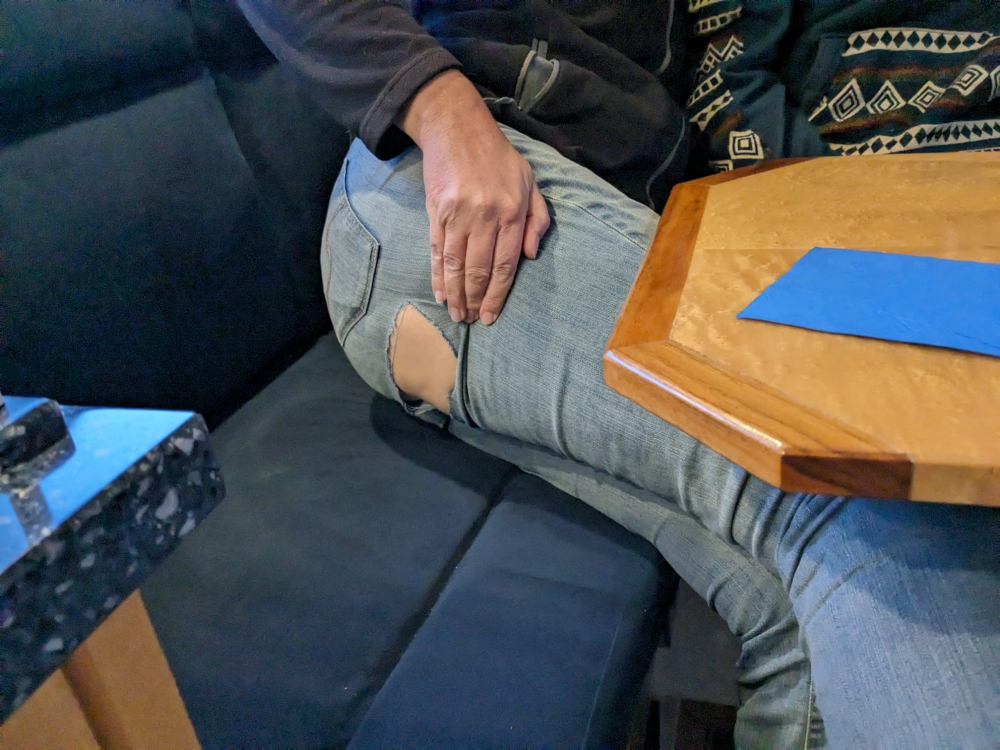
I think these jeans are done!
We paid the usual $35 for Starlink (our business takes care of the other half) and I added $5 to my Skype account, which allows me to call my parents on their landline if WhatsApp doesn’t work (or they don’t hear the ringtone). And, we spent much more money on “propane” again, which is a story in itself. Drinking water didn’t cost us anything in May.

Getting water in Tupungato

Getting free drinking water on a crisp morning in Realico

We try to filter our water when possible (when space and treads allow our filter to be attached)
Because of the freezing fall weather (yes, it’s been cold and uncomfortable for weeks now) in Central Argentina, we needed to run our propane heater a lot. Usually, one 20-pound (10kg) tank lasts us three months. Not now. After a ridiculous cold spell, our gauge showed empty and we needed to make a detour to get the tank filled. Except, unbeknownst to us, the owner of the shop only had butane, so put that into our tank – and overcharged us. In tropical climates (like when we sailed), this is not an issue. In icy temperatures, however, butane is not the right choice, which we learned the hard way.

And then, there was snow!

We camped with snowy picnic tables!

Snow on the bushes

A few mornings in a row, we woke up to this temperature – We only turn our heater on to prevent water pipes from freezing.

Bracing the cold – and a deep ditch – to fill our empty propane tank… with butane!

Our tank was chockfull – overfilled and overpriced – with butane. To top it off, can you see what this man is holding in between his fingers?
We had finally arrived in an attractive and peaceful spot by a lake. By 6am the following morning, the temperature had dropped so much that the butane – and therefore our heater – didn’t work. The only way to get the liquid gas flowing and evaporating (“boiling”) again was to pour warm water over the tank in an outdoor cabinet. Luckily, the flame of our stove was big enough to produce lukewarm fluids.

We found an awesome – yet cold – camping spot!

Soaking up the rare sunrays
We had two options: top up the tank with “real” propane (since it was a holiday and the weekend, no store was open) or move to a town where above-freezing temps were predicted. That’s what we did. Of course, the weather forecast was wrong and, this time at 3am, we were out of luck and heat!

Frozen grass

We needed a scraper for the window if we wanted to leave this morning!
We saw our breath inside and shivered, as Mark put many clothes on, warmed up some water on a struggling flame, poured it over the gas tank, used the then properly working stove to heat up a massive pot of water, and repeated the process. Our heater worked!
When the heater stopped working again (meaning the butane had gotten too cold), he went outside to pour more warmish water over the tank. Eventually, he wrapped Maya’s dog towel around the tank, so, when wet, that kept the gas in operating condition a bit longer. It was a long night!
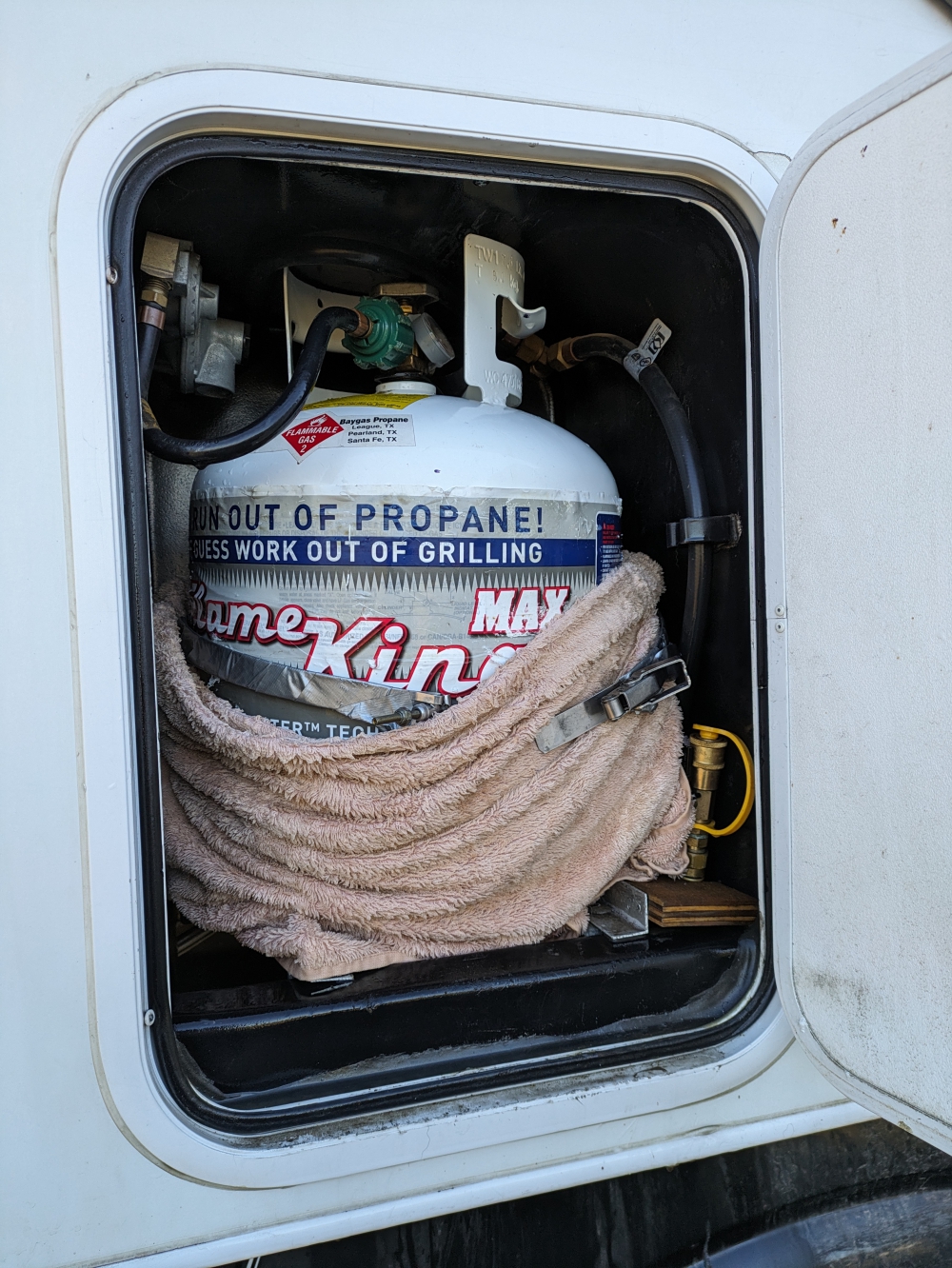
Trying to keep the butane gas from “freezing”!
We found a new propane filling station (triple checking it wasn’t butane) as soon as possible. They charged us for a full tank, despite it only being half empty. It didn’t matter!
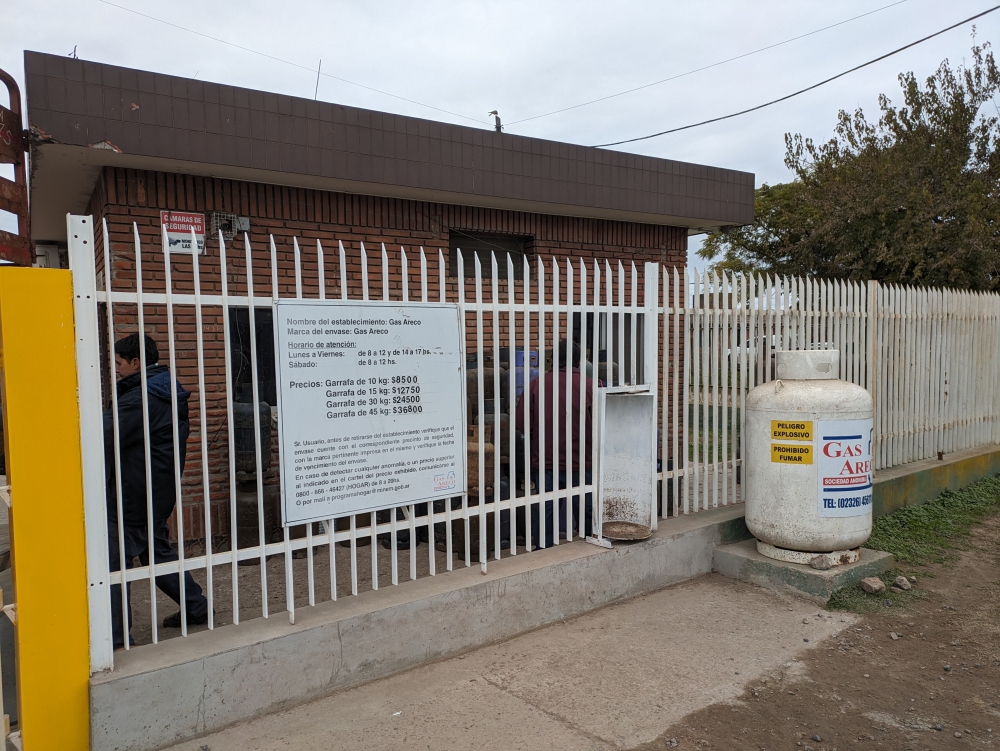
Filling our tank again, this time with propane in San Antonio de Areco
The cold weather brings other issues with it, like heaps of condensation, turning into mold. We need to open hatches and drafty cabinets and wipe up water constantly, which keeps us shivering and uncomfortable. Because of our upcoming trip to Massachusetts and Belgium, out of Buenos Aires, we cannot leave the area and escape what feels like winter in the Southern Hemisphere.

Airing out the cabinets – so much condensation!

Airing out the mattress – everything is wet from condensation when it is this cold!

Airing out our bedding and towels on a decent day

Eating lunch in Bella – We are cold outside and inside!

Maya snuggles in bed – we love our flannel sheets!
Other items we ordered online to bring back to the camper in September are a new keyboard and cover for Mark’s laptop, strong Velcro, water filters, and a gasket for Bella, and three types of batteries.
And now is when I want to thank our dear followers and readers who donated money towards our “enjoyment” level the past months. We’d saved some of that up and received new contributions, allowing us to go out for dinner a few times (or order take-out pizzas to make the funds last longer ????) in May. One time, we picked up cheap, basic crusts at a restaurant and added our own toppings.

Pizza dinner out with our friends Abigail, Richie, and Zoe

Amazing pizza out – but pricey

Dinner out in San Rafael, for Heather and Jon’s 30th anniversary

Tomahawk steak with two side dishes

Pizza from a take-out place upon arrival

The same pizza slice “dressed up” at home
Your generosity also let us enjoy some good wines, which we bought in stores and vineyards (at an average of $3.50 a bottle), and it allowed Mark and me to savor a couple of tastings at Bodegas. To us, the wonderful yet affordable wine of Argentina is one of this country’s highlights so far!

Wine tasting in Maipu

List of available wines in Bodega Tempus Alma in Maipu

Wine tasting – and buying – at Bodega Giaquinta, our all-time favorite in Argentina

Wine tasting at Bodega La Azul

We both love the Dada brand of wine, which is affordable and flavorful.
Out of character, we did pay for camping last month. We spent a few nights ($3 x 4) at municipal campgrounds with American friends, who allowed us to plug into their rig (our system is not set up for the local 220V outlets) and – for the first time in six months – have a 100% full camper battery! For two nights and days, we did not have to struggle with our power supply and usage.

Our camping spot in the Municipal Campground of Tupungato allowed for sunshine on our solar panels

Camped at the cold and quiet Manzano Historico Municipal Campground

And we are full!!! Super awesome.
When checking options to store our camper during our absence, we stayed one night ($7) at Zaparancho near Buenos Aires. More about that in a future post.
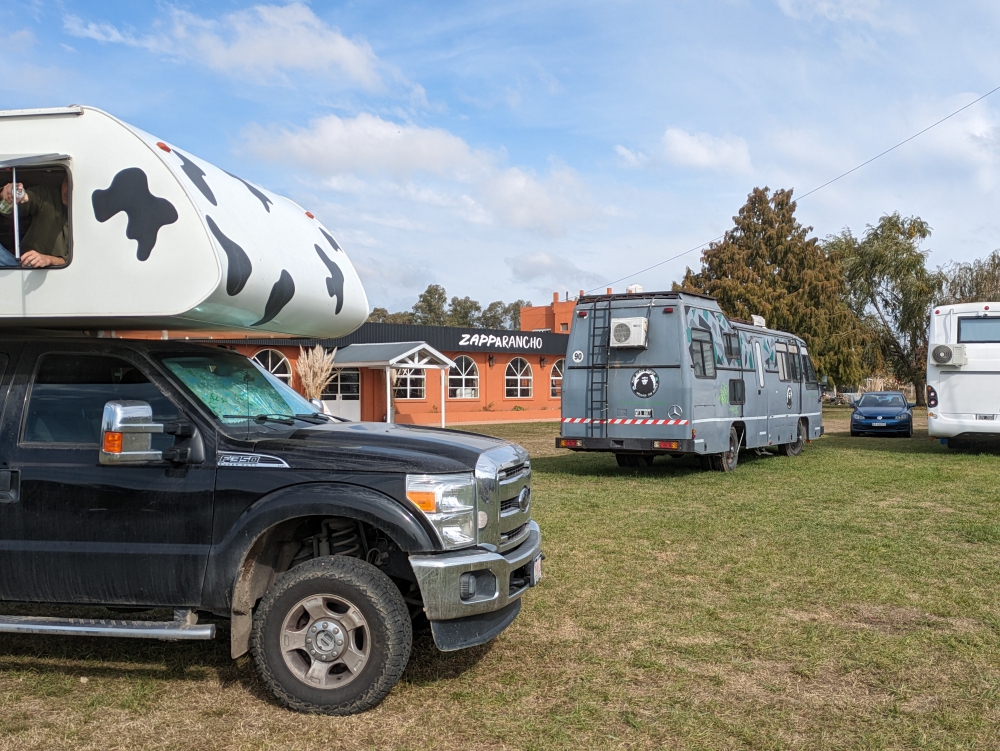
Quick stop at Zapparancho in Villars, near Buenos Aires
Most of the nights, we camped for free; sometimes in nature and sometimes in bustling towns. Guess what’s our favorite?

Free camping spot near Portrerillo Reservoir on May 1st

Our favorite – and quietest – boondocking spot in San Martin Park, Mendoza

Boondocked by El Nihuil Reservoir

Nice and quiet camping spot in Canyon del Atuel

Another quiet night with friends in a side canyon towards San Rafael

Free – and noisy – camping in San Rafael

Free Municipal Campground in Realico

Free camping in Torres
I am currently buying a couple of small gifts for my niece and nephew in Belgium and, lastly, dropping off dirty clothes set us back $10. We can’t wait to do our own laundry soon! As a matter of fact, Mark and I are really looking forward to a multiple-month break from the road as this lifestyle has recently become much more challenging due to the lack of sunlight (power issues) and warmth (discomfort).

Having laundry done in San Rafael

Our first night in loud and hectic Buenos Aires (Puerto Madero)
We are both pleased with May’s expenses totaling around $1,000, especially since this amount includes a bunch of gear that is waiting for us in the US.























































































